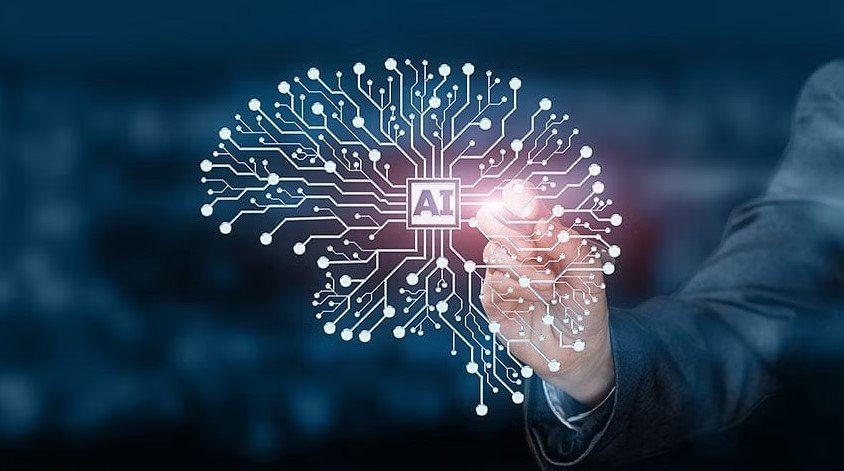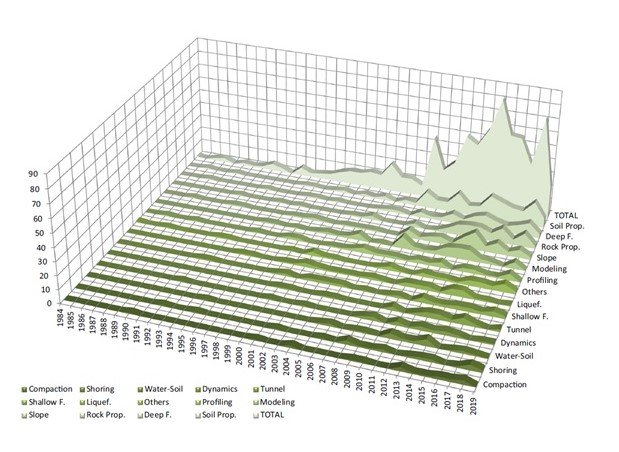
"If you can't explain it simply, you don't understand it well enough" (Albert Einstein)

geo
"If you can't explain it simply, you don't understand it well enough" (Albert Einstein)
Artifical intelligence and geotechnical engineering
Artificial intelligence is the ability of a computer system to mimic human cognitive functions, such as learning and problem solving. Today, the application of intelligent systems is becoming more and more widespread, covering practically all areas of modern society. But, what is the degree of application of this type of technology in Geotechnical Engineering? Read on to find out the answer to this question...
Overview of artificial intelligence
Artificial intelligence (AI) techniques include mathematical approaches developed to search for the most appropriate solution according to certain criteria, at time and with the available resources (Ebid, 2021). Since its creation in the mid-1950s, AI has become a technology that has generated decisive changes in every aspect in which it is applied, particularly in recent years, when the technological development of our civilization has accelerated. Its continues to expand at an ever-increasing pace, through major contributions in areas such as optical character recognition, computer vision, speech recognition, medical diagnostics, defense, and autonomous vehicles. Indeed, there is a little doubt that AI will continue to grow in the future and become much more routine than it is today (Jaksa & Liu, 2021).

Figure 1 Artificial intelligence (Source: https://www.simplilearn.com/advantages-and-disadvantages-of-artificial-intelligence-article).
Machine learning (ML) is a subset of AI, and is the study of computer algorithms that improve automatically through experience. Some ML techniques mimic evolved natural algorithms, such as neural connections, the evolution of natural selection, the behaviour of groups of creatures such as bees, ants, or birds; while other ML techniques do not mimic any natural algorithms, but rely on mathematical, logical and statistical approaches to find the best solution (Ebid, 2021).
En general, todas las técnicas de IA requieren un conocimiento previo relacionado con el problema, y es por eso que las técnicas de IA suelen denominarse »técnicas basadas en el conocimiento». Este conocimiento está basado en un conjunto de casos prácticos o resultados de pruebas y ensayos que se utilizan para que el sistema aprenda sobre el problema a través del ML.
In the Earth sciences, the most common form of machine learning is artificial neural networks (ANNs), which are computer-based substitutes for the human brain, which is basically a biological neural network.
Research related to AI applied to Geotechnical Engineering
The main components of AI applied to prediction in the field of Geotechnical Engineering are, as mentioned above, systems based on prior knowledge, which are developed from the results obtained in research on the different topics related to this discipline.
Taking into account the thousands of papers that have been published in the last 40 years within the field of Geotechnical Engineering, it is clear that AI has a wealth of knowledge to learn from. However, between 1984 and 2019 only 800 AI-related research papers were published in Geotechnical Engineering, grouped into fourteen categories (Ebid, 2021): soil properties, rock properties, soil classification and profiling, slope stability, soil surface compaction, soil-water interaction, soil behaviour and modelling, shoring and retaining structures, tunnelling, soil and rock dynamics, soil liquefaction, shallow foundations, deep foundations, state of the art and review research. Figure 2 shows the distribution of publication density for each of the above categories in the period 1984-2019.

Figure 2 Number of research studies classified by category and year of publication (Source: Ebid, 2021).
As can be seen from the previous figure, the main topics associated with practical Geotechnical Engineering have been considered in AI-related studies. This is because ML and its derivatives, such as deep learning (DL), are particularly useful and relevant for Geotechnical Engineering, where data are often scarce, variability of soils and rocks significant, and measurements - especially in situ - are significantly affected by uncertainty.
Application of AI in Geotechnical Engineering
Despite the research carried out over the last 40 years, many of the results of the application of AI techniques in Geotechnical Engineering are not yet being put into practice in the real world, mainly for the following reasons:
- The data set used is limited and therefore the results are only valid (or accurate) for certain cases (or in a narrow range of parameters).
- Lack of confidence in the dataset used.
- The output format of the used AI technique is either difficult to understand for most geotechnical engineers, or the obtained data require special tools for implementation (mainly based on advanced statistical and programming techniques).
- Results of AI techniques (closed-form equation, weight matrix or other format) have no scientific background or physical meaning, so it is difficult to guarantee or predict their reliability for any case under consideration
However, the above points could be overcome by comprehensive studies, using a wide range of values of the parameters considered in each case, in order to improve reliability and ensure the validity of the results for different case studies.
In any case, the enormous potential of artificial intelligence and machine learning to augment traditional forms of Geotechnical Engineering analysis is evident. It is only a matter of time before AI becomes another tool to be employed in geotechnical projects.
References
- Ebid, H. (2021) “35 years of AI in Geotechnical Engineering: state of the art”. Geotech Geol Eng (2021) 39:637–690. https://doi.org/10.1007/s10706-020-01536-7.
- Jaksa, M. & Liu, Z. (2021) “Editorial for special issue: “Applications of artificial intelligence and machine learning in Geotechnical Engineering”. Geosciences 2021, 11, 399. https://doi.org/10.3390/geosciences11100399.
- Reddy, Y. (2014) “Artificial intelligence in Geotechnical Engineering: applications, modeling aspects, and future predictions”. © 2014 JETIR, Volume 1, Issue 1. Available at jetir.org (ISSN-2349-5162).